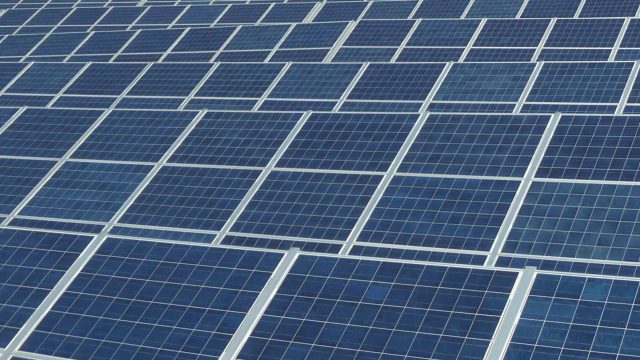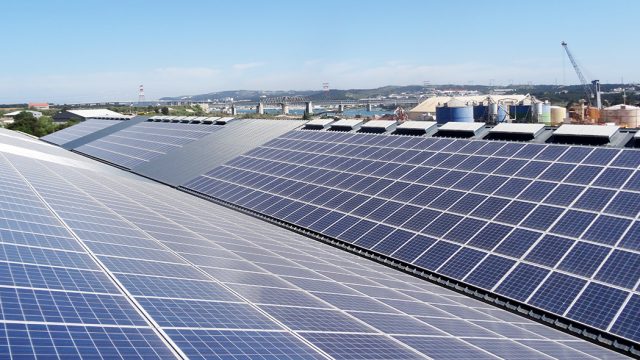Floating PV – niche market or transformative disruptor?
As published in PV Magazine International 20th August 2019
Photo: Ciel et Terre
Why on earth would you want to install PV on water? There seem to be plenty of safer sites for solar PV on solid ground or stable rooftops. Nicolas Chouleur of Everoze highlights the key requirements for the bankability of floating PV, right through the project life cycle, from development to dismantling.
Why bother with the additional complexity of handling DC current on water? On closer inspection, it can make a lot of sense. For instance, Japan has been a pioneer in developing utility-scale floating PV projects, due to a lack of available land in the mountainous country, where PV competes with agriculture, industry and housing for space.
In 2018, the global cumulative capacity of floating PV reached the 1 GW mark. The size of the projects is increasing rapidly, from a few hundred kilowatts five years ago to platforms loaded with several megawatts today. China is the leading market, with a focus on developments on power dam reservoirs. In Europe, the most recent development has emerged in the Netherlands, which has announced 8 GW of potential just by installing floating PV along its dikes.
Some promoters of floating PV now suggest that this technology is ready to take a bigger plunge by going offshore. But where there are opportunities, there are challenges.
Development and design
Environmental studies are a key driver during the development and design phase of floating projects. The requirements are likely to be quite different for an irrigation pond on private property or a water treatment pond, compared to a freshwater basin near a nature reserve. In all cases, the impact on the water quality by the material of the floaters has to be taken into account. Today, it is still unclear
whether modules have a positive or a negative effect on aquatic life. The surface of the PV plant may become a refuge for fish if the site is built on a large lake. But the shade may also have a negative impact on the flora. Research is currently being undertaken in different regions to provide future guidance. However, in the near term, environmental studies will remain a significant cost item for any early stage floating PV development.
Beyond generating electricity, floating PV can reap additional benefits such as reduced evaporation of drinking water reservoirs, shelter to aquatic life in fishing areas, stabilising regions with weak grids, or complementing existing generation profiles, such as hydropower plants. These can be factored into the assessment of environmental risks.
Energy assessments
Assessing the energy output of a floating project is subject to several uncertainties around irradiation data, cooling effects and mismatch losses. Satellite irradiation data from water surfaces is less accurate than from land areas, due to the microclimate phenomenon of water bodies. In some regions, the solar resource is higher over or near the sea, due to cloud formation patterns. For example, in the Netherlands, irradiation is 4-8% higher over the North Sea, compared to inland.
When installing bifacial modules, the albedo has to be considered, which is on average lower over water than over grassland, but can be significantly higher at early or late hours of the day. In the current era of increased renewables penetration on the grid and the growing interest of developers in merchant markets, capturing higher prices during those times becomes more attractive.
A body of research papers report improved module cooling effects on water compared to installations on the ground, ranging from 2°C to 12°C. According to the Solar Energy Research Institute of Singapore, floating panels are up to 16% more efficient, because the cooling effect of the water reduces thermal losses and extends their life. However, estimating the impact of effects such as these on the yield is not straightforward, and the benefits are seldom taken into account by project financiers.
Waves can provoke different module-to-module orientations and slopes, leading to increased mismatch losses. No simulation model is currently capable of accurately assessing this phenomenon, which can mean conservative assumptions in financial models are adopted.
Design and technology
Depending on the site conditions, the design of a floating PV system can be subject to stringent constraints. On water surfaces, mechanical sizing has to take into account the impacts of splashing waves and underwater currents. While anchoring and mooring is by now happily dealt with by offshore wind developers, they are new to most PV players. In any case, the equipment has to withstand the high humidity and potentially saline environment over the long term.
To date, individual floaters have been the dominant solution, but larger platforms supporting multiple modules may be better for tracking or bifacial solutions. Particular care is needed for cabling design and onshore grid connection.
Construction questions
The construction phase triggers multiple questions. Access to the site and the location of spare parts are key questions to be answered early on. Installing the anchors requires specialised equipment and teams. The same applies to the installation of the cables, where small mistakes can easily lead to accelerated degradation and cost increases – both key risks for investors and lenders.
O&M training
Basic maintenance isn’t different for floating PV plants. Nevertheless, specific training is required for operators and careful selection of equipment is important. Additional hardware such as boats implies increased costs. Sound preventive maintenance with particular care for corrosion detection and insulator health should help developers to avoid major failures.
While floating PV platforms can in some cases offer a wonderful refuge for birds, droppings may lead to increased soiling losses. In any case, cleaning frequency, as well as wastewater management, need to be adapted to floating systems.
Solar developers generally prefer to focus on the details of the early phase in the life cycle. But the assumption that decommissioning costs will be cancelled out by the scrap value of the system is unlikely to hold for floating PV projects.
Bankability outlook
For now, with only 0.2% of the PV market in 2018, floating PV remains niche. The limited track record of the structures and key players can lead to lenders pressuring for more guarantees. But while prices for floating systems are currently around 10-20% higher, with slightly higher insurance and O&M costs, these can be balanced out by performance ratios that are 5-10% higher, coupled with the potential for lower rent. If offshore PV can prove itself to be cost competitive, then there is virtually no limit to its development.






